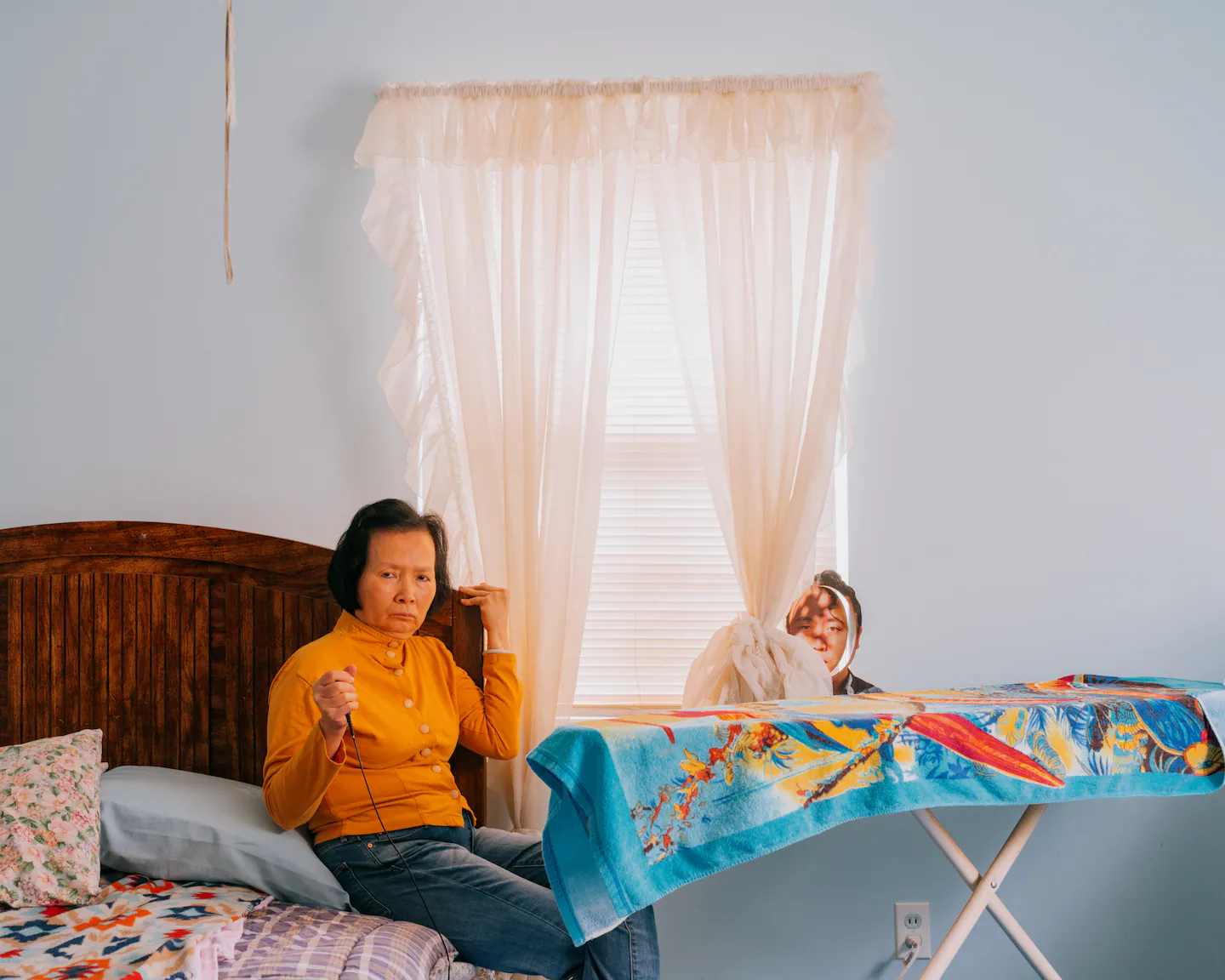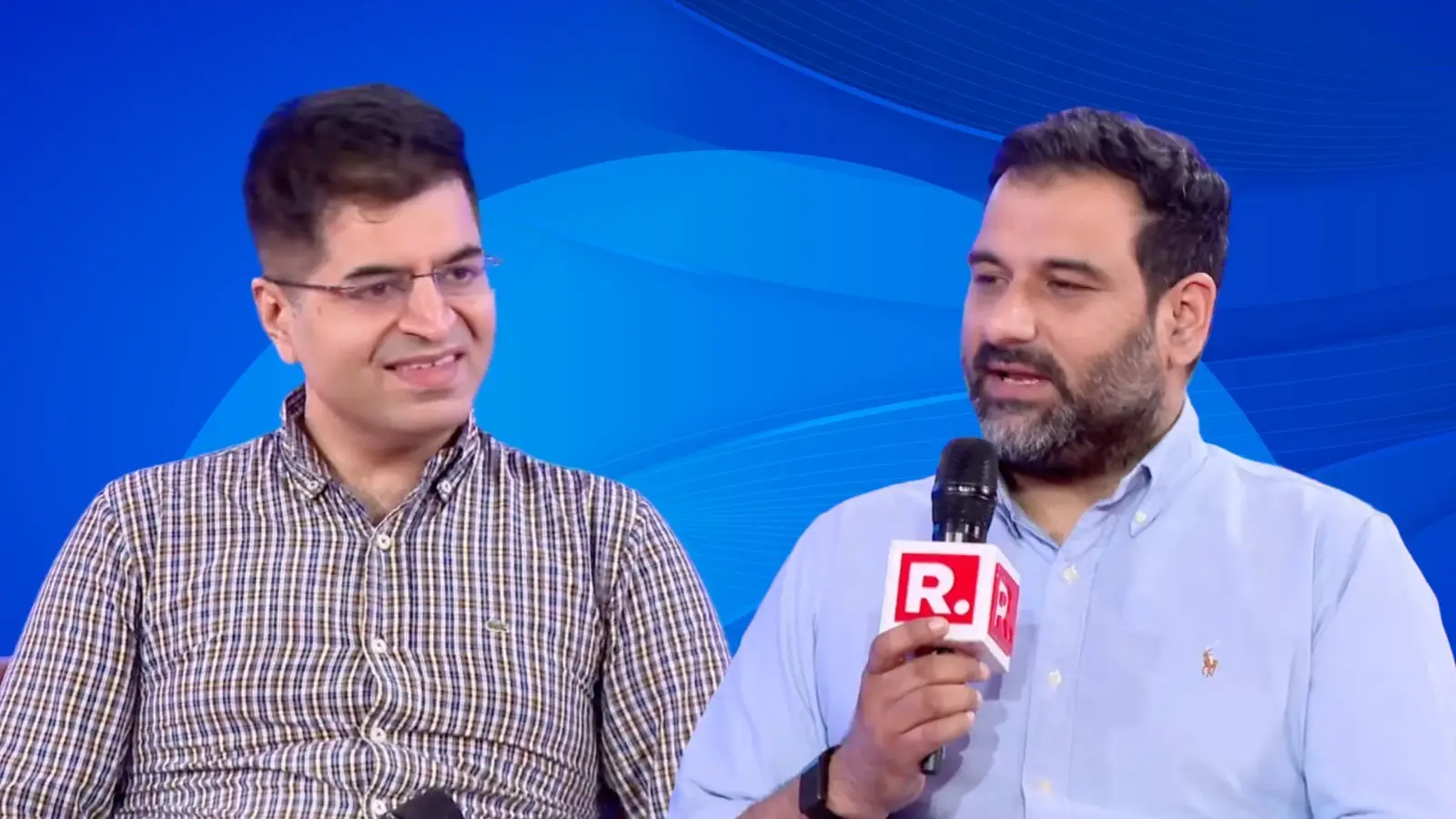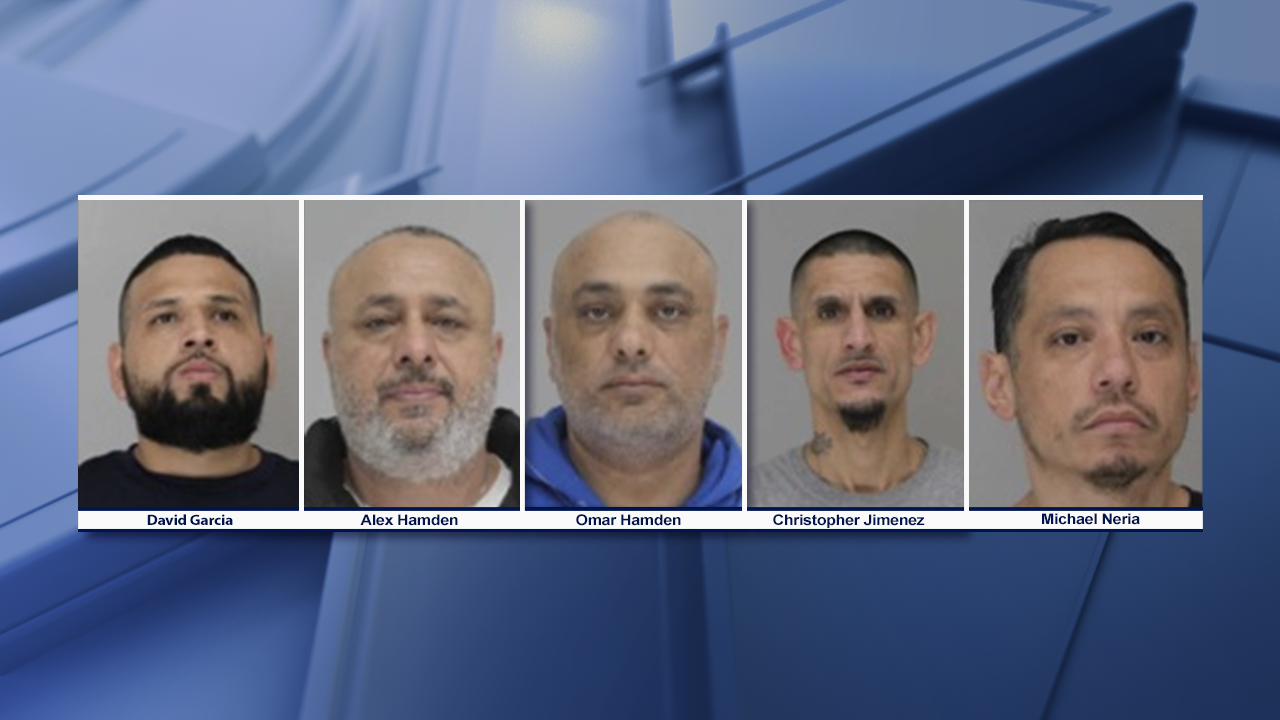
The Addison’s Rachel Vogel curated the Kha show, as well as a complementary exhibition drawn from the gallery’s holdings, “Family Portrait.” That show runs through Jan. 4. Speaking of complementarity, the main show currently up, “Making Their Way: The Florida Highwaymen Painters” has its own companion show drawn from the permanent collection, “Captive Lands.” Ah, the things a museum can do when it has holdings as rich as the Addison’s.
But back to Kha and this business of pigeonholing. Born in Memphis, Kha is Chinese-American (ethnic/racial pigeonhole), grew up in the South (regional pigeonhole), is gay (sexual-identity pigeonhole), can be very funny (superficial/frivolous pigeonhole), and appears in many of his photographs, and sometimes so do his mother and grandmother (autophotography pigeonhole).
Wait: “autophotography”? You know, like autofiction, only it has the advantage that you don’t have to read, just look. And Kha makes sure each photograph offers a lot to look at. The Addison has hung the pictures in white frames, which makes the colors stand out all the more, and without mattes, which makes it seem as if what’s going on within those frames is trying to escape constraint. Kha’s natural tendency to rambunctiousness — even at his most deadpan, there’s always the sense of a wink waiting to happen — receives its fullest expression outside any frame, in “Flatlands,” a very large installation that’s like a convention of Rauschenberg combines. The exhibition checklist describes it as “Dimensions variable.” No kidding.
So forget about pigeonholes, which by definition are dimensions invariable. Instead, think of Kha in terms of affinities. Where pigeonholes confine, affinities extend. An affinity, especially with a relatively young artist (Kha was born in 1988) isn’t as pronounced as an influence. Influence can be a different kind of pigeonhole, but affinity doesn’t work that way. It suggests both how to approach an artist’s work and that artist’s own approach to the world.
With Kha, two primary affinities stand out. The first is with his fellow Memphian William Eggleston. The initial section of “Other Things Uttered” underscores this. Eggleston revolutionized art photography in the ‘70s, not just as a key figure in making color respectable (all of Kha’s work in the show is in color, and, as with Eggleston, a particularly vibrant color, at that) but a seemingly (underscore seemingly) heedless presentation of highly heedless subject matter. Eggleston once described his larger undertaking this way: “I began to go out to places that were to me either foreign or confusing or ugly or many different adjectives.” Kha is definitely a many-different-adjectives guy.
Himself a Southern exotic, Kha is drawn to Southern exoticism: a Chinese restaurant in Memphis, for example, or a Tennessee general store with a deer head mounted on a wall (a 7-Elevenof oddball signage it’s not). Both those photographs are big, 3 feet by nearly 4 feet. The true Egglestonian affinity becomes evident with the 70-odd, some quite odd, 4-inch-by-5-inch prints that line two walls. They make up — pause for a deep intake of breath — “Selections from ‘Signs, or Signages That Sign What They Sign Not What You Want Them to Sign.” Kha’s funniness is usually visual, but sometimes it can be verbal, too.
The affinity with Eggleston has to do with externalities and attitude (starting with the trickster streak they share). The other chief affinity, with Cindy Sherman, is internal and conceptual. For half a century now, Sherman has made photographs that dwell on the slipperiness of identity. The career-making example is her series “Untitled Film Stills.” In it, Sherman uses props, costume, setting, hairstyle, cosmetics, and lighting to impersonate dozens of imaginary film characters. While always remaining herself, Sherman assumes the identity of various nonexistent others.
Kha does her one better: remaining himself, he becomes his own Cindy Sherman, dwelling on identity (a universal concern) through presenting his own person as his own person. The clearest statement of this surpassing concern is “Assemblies I (Or Me Crying in Three Takes), Greenpoint, Brooklyn,” from 2020: a self-portrait as jigsaw puzzle. It would be hilarious, except that it’s so unnerving. It would be glib, except that it so simply (and imaginatively) presents a — or is it the? — fundamental dilemma of human personality.
The art historian Rosalind Krauss has described “Untitled Film Stills” as “copies without originals.” Kha is original and copies both — and copies in several forms. In addition to pictures with him in them, there are pictures with masks of his face and Kha cardboard cutouts. A photograph is a two-dimensional simulacrum of three-dimensional reality. Kha takes that one step further, offering simulacra of simulacra. In a nice touch, a vitrine includes a selection of Kha face masks and cutouts. The masks and cutouts lend a matter-of-factly fantastical quality to the work, never more disturbingly than in a photograph of Kha’s disembodied face resting on a stove burner. Runners-up in the disturbing-image category are two photographs showing sets of hands emerging from the ground. There’s also one of Kha lying corpse-like in a casket. The photographer’s frolicsomeness makes it easy to overlook how unflinching the work can be, too.
There’s also copy in a different, far richer, and profoundly human sense: In several photographs Kha’s mother or grandmother appears. Each of us is a version of our forebears, sometimes obviously (you can see where Kha’s gift for deadpan comes from), sometimes less so. Either way, a sense of belonging is a crucial component of identity, and nowhere does that matter so much as with family. Maybe it’s here, with artistic category, that Kha’s most meaningful defying of pigeonholing asserts itself. His work is part performance art, part family album.
“Family Portrait” includes some actual family albums, as well as an array of snapshots. They’re in a display case, separate from the more than four dozen photographs hanging on the walls. Those photographs are by the likes of Diane Arbus, Harry Callahan, Robert Frank, Dorothea Lange, Sally Mann. One of two photographs by Eugene Richards includes an actual photo album.
The contents of the display case are credited to that most important, if least honored, photographer in the history of the medium: Anonymous. In that attribution there’s an irony which Kha would surely appreciate, family being the one setting where no one ever really is anonymous.
HAYES PRIZE 2025: TOMMY KHA, OTHER THINGS UTTERED
FAMILY PORTRAIT
At Addison Gallery of American Art, Phillips Andover Academy, 3 Chapel Ave., Andover, through Jan. 25 and Jan. 4, respectively. 978-749-4015, addison.andover.edu



